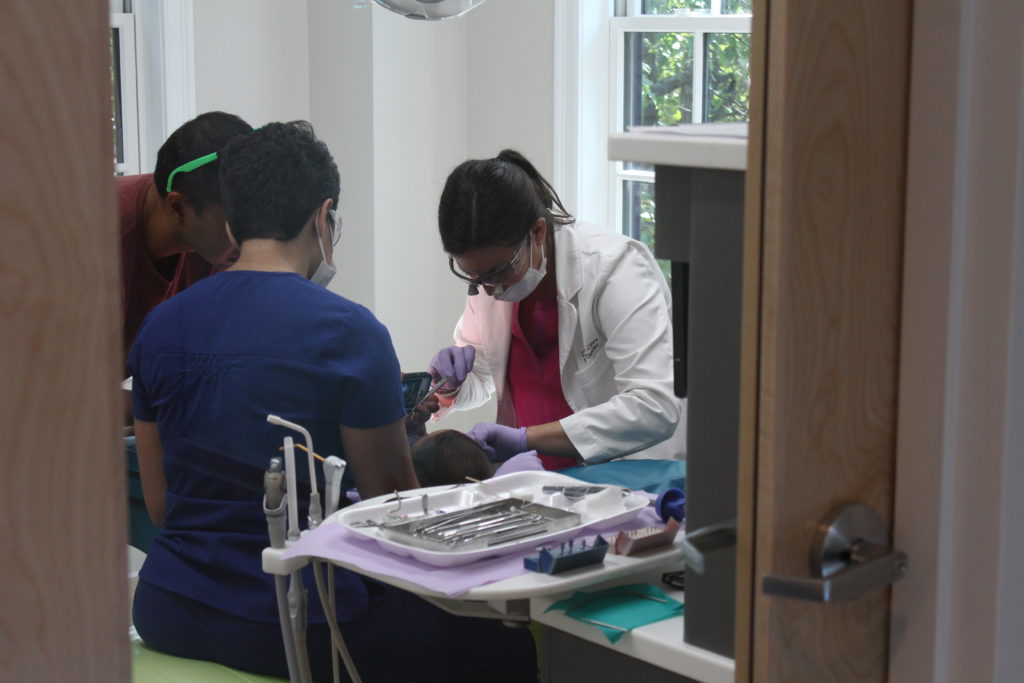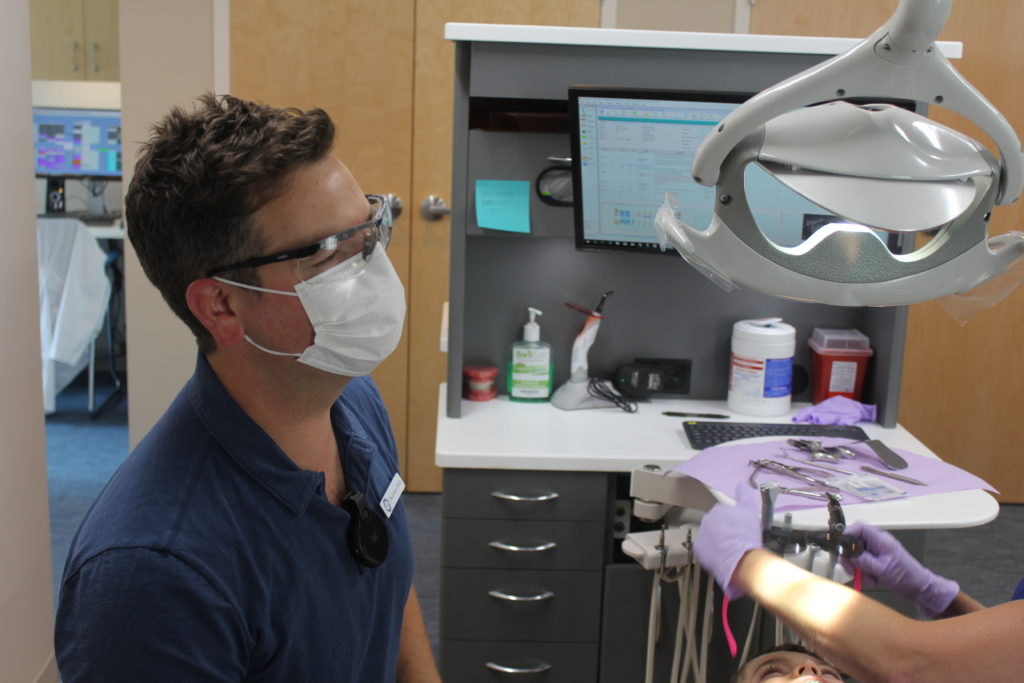Fluoride is often mentioned in discussions about dental care for children, as it is one of the best methods for preventing tooth decay. This is because fluoride helps prevent cavities in children by strengthening the outer surface of the teeth, which makes them more resistant to the acid attacks that cause tooth decay.
Everything a person eats will leave a certain amount of sugar on the teeth. Bacteria feed on this sugar and produce plaque, which has an acidic quality that causes tooth decay. Tooth enamel is made up of a variety of minerals, and this acidic plaque breaks down and removes these minerals. This can eventually lead to the holes and pits that are commonly associated with a cavity. The process is called demineralization, and while daily brushing and flossing breaks up and cleans plaque from the teeth, fluoride can reverse demineralization and even lead to remineralization, or a rebuilding of the enamel.
Demineralization and remineralization
In simple terms, the closely packed mineral crystals that make tooth enamel are lost and gained continuously. Losing minerals is called demineralization, while gaining them back is called remineralization.
As described above, the demineralization process begins with plaque bacteria. This bacteria feeds on sugar and other carbohydrates from food left in the mouth and produce acids that dissolve crystals in the enamel. The loss is then balanced by remineralization, in which minerals such as fluoride, calcium, and phosphate are deposited back into the enamel via saliva. If the balance is not equal and there is too much demineralization and not enough remineralization, it can lead to tooth decay.
Fluoride helps the remineralization process in two ways. When fluoride is consumed in small doses through food or drink, it enters the bloodstream and becomes part of any developing permanent teeth. Fluorides that are swallowed also become part of the saliva and can strengthen the teeth from the outside. Enamel that has been strengthened by fluoride is less prone to damage from acids. This is what we refer to as a systemic benefit.
Fluoride is also beneficial when applied directly to the teeth. This can take the form of fluoridated toothpaste, rinses, or treatments. When applied to the outside of the teeth, fluoride helps to expedite remineralization. Coppe + Sears offer fluoride varnish treatments which are strong enough to disrupt the production of acids by bacteria. This is what we refer to as a topical benefit.

Sources of fluoride
There are several options for introducing fluoride to the teeth. Drinking water is one of the easiest ways to benefit from fluoride, since it is naturally found in most water sources, rivers, lakes, and wells. For the past 70 years or so, fluoride has also been added to public water supplies to help prevent tooth decay in larger numbers. This kind of community water fluoridation is comparable to drinking milk that has been fortified with Vitamin D, or eating bread that has been enriched with folic acid. The program has played such an important role in the reduction of tooth decay that the CDC has proclaimed community water fluoridation to be one of the greatest public health achievements of the 20th century.
Water fluoridation has been shown to help prevent tooth decay by around 25% in children and adults. Almost 75% of the U.S. population is served by fluoridated community water systems. However, with the increased popularity of bottled water, many people are now getting less fluoride in their diet. In addition to being fluoridated, tap water will typically have to pass more stringent health guidelines than bottled water. We encourage patients to drink tap water whenever possible to take advantage of this simple step in maintaining healthy teeth.
In addition to fluoridated water, toothpaste with fluoride has been responsible for a significant drop in cavities since the 1960’s. To reap the full benefits, teeth should be brushed twice a day, or as directed by your dentist. Look for one with the ADA Seal of Acceptance to make sure it contains fluoride. Children younger than 3 years of age should be assisted, and use fluoride toothpaste in an amount no bigger than a grain of rice. Those who are 3-6 years old should use a pea-sized amount. All children should have their brushing supervised by an adult to ensure the right amount of toothpaste is used, and that the child is spitting most of it out rather than swallowing it.
Mouthwash with fluoride can help make permanent teeth more resistant to decay, and it is the third part of our daily recommended oral hygiene routine in addition to brushing (two times per day) and flossing (one time per day). Parents of children younger than 5-6 years of age should monitor them during the use of fluoride mouthwash to ensure that it is spit out instead of swallowed. If your child is unable to easily spit out liquids, we recommend waiting to start the use of mouthwash. We can help you make an informed decision at your next dental checkup.

Trust Coppe+Sears for healthy smiles that last
The many benefits of fluoride can be found in different places, and work externally and internally to strengthen the teeth. For the best results, Coppe+Sears recommend both systemic and topical use of fluoride, as well as regular check-ups with Drs. Coppe and Dr. Karapetian. These are simple steps that lead to lasting, healthy smiles for the whole family!
